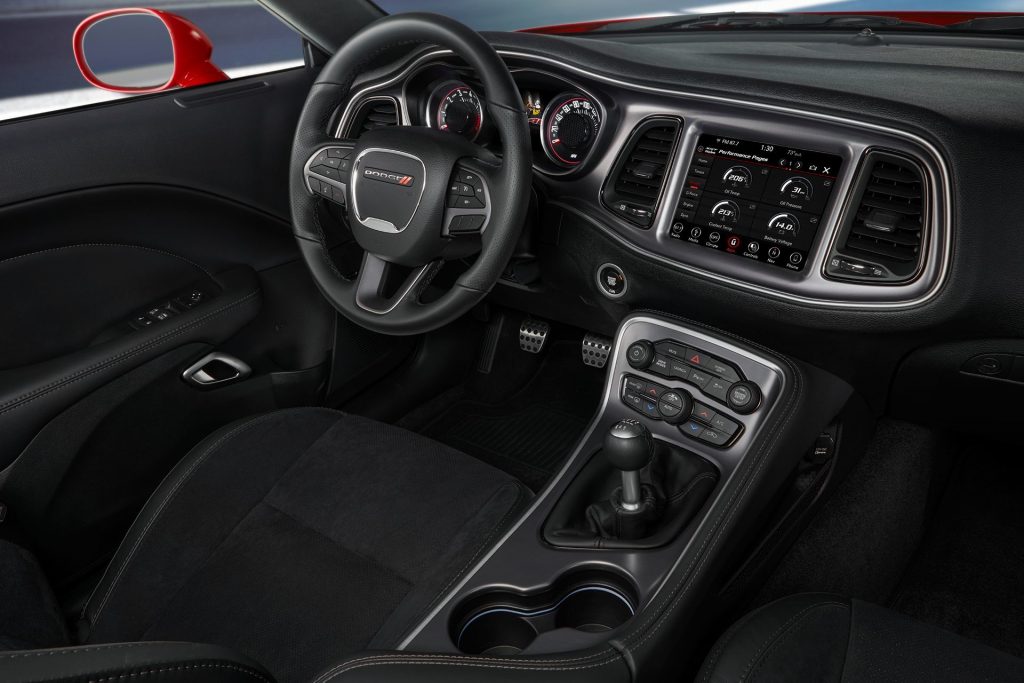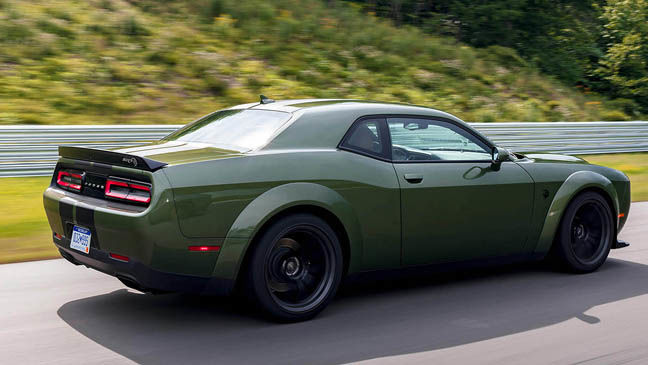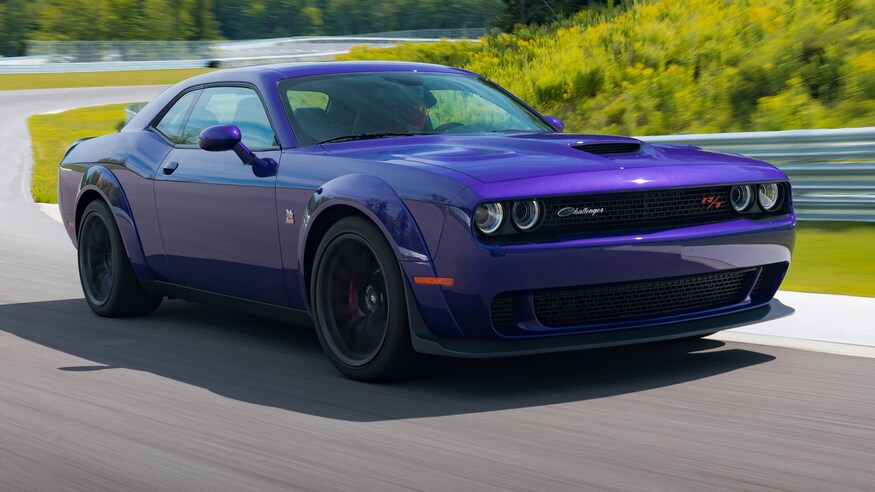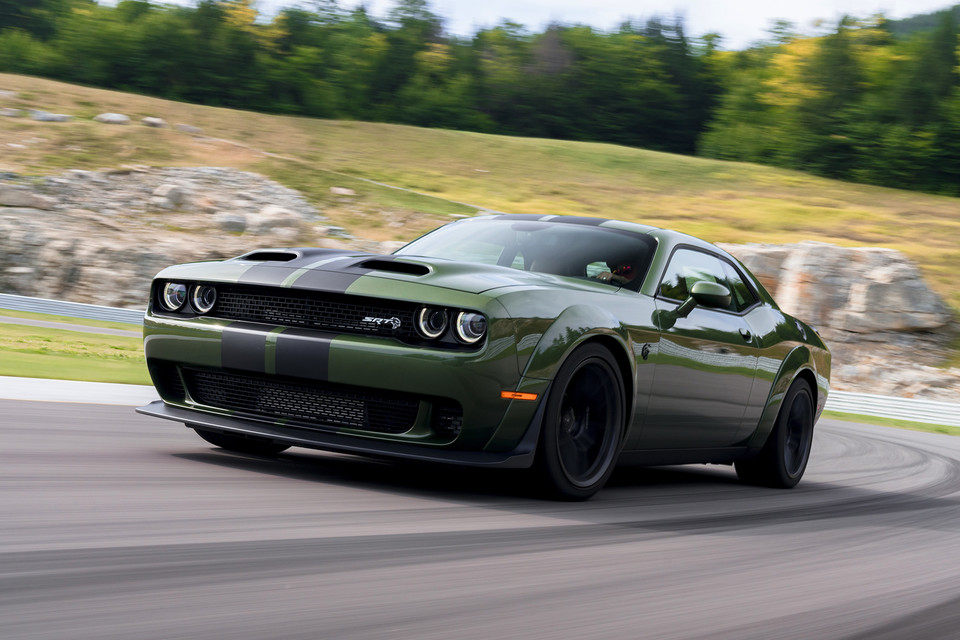By Shari Prymak
No contemporary muscle car is more authentic to the classic muscle car era than the Dodge Challenger. Where the Mustang and Camaro make an effort at technological sophistication and leanness, the Challenger is content being a big, heavy, tire-shredding brute. It’s no modern engineering triumph, but it’s not trying to be. In terms of look and feel, it’s as close as you can get to a muscle car from 1970.
Even though the Challenger isn’t exactly the most sophisticated muscle car on the market, there’s something endearing about the fact that it hasn’t moved with the times, otherwise it might have become some sort of autopilot 4-cylinder turbocharged hybrid. In a world where cars of all types are downsizing, the Challenger continues to preach “go big or go home.”

My test car was the 392 Scat Pack, which comes with a 6.4L V8 that produces 485 horsepower and 475 lb-ft of torque. It sits between the cheaper 5.7L V8 R/T model with “only” 375 horsepower, and the top dog SRT Hellcat, with a supercharged V8 and an ungodly 717 horsepower. 6.4 litres is a ridiculous amount of displacement for an engine in this day and age, but damn is it ever good. The acceleration and the accompanying noise that come from winding it out are pure thrill. It feels like an animal gone feral and barely containable. God only knows what the Hellcat is like. Either way, keep a healthy reserve budget for tires.
You’ll need to throw quite a few dollars in that reserve for fuel as well, because the Challenger guzzles gas at an alarming rate. I averaged 19.0L/100km over a week of mostly city driving. It is anti-fuel efficient to the point where you might just want to leave it parked for a while to take a break from the gas station. That, however, would be no punishment, because then you’ll get to marvel at just how cool it looks.

The optional widebody treatment looks so good it really should come standard. My test car came in a cool retro hue called “F8 Green.” Flashy paint colours and retro decal graphics tend to be popular options and suit the car well. The interior, however, is a somewhat less spectacular sea of black-coloured, mediocre materials. The front buckets are also ridiculously chunky and take up a fair amount of rear seat space. On the bright side, Chrysler’s straightforward UConnect remains one of the better infotainment systems, offering both a responsive touchscreen with easy to use buttons and knobs.
Downsides? Well, aside from the insane thirst for premium fuel, there’s the sheer size and weight of the thing. Both are a total buzzkill when exploring the Challenger’s handling with any kind enthusiasm. The hugeness is also an issue in the city, where it can feel downright ungainly and cumbersome. Finally, there’s the ambitious pricing, which is higher than that of the equivalent Mustang or Camaro at most trim levels. The 392 Scat Pack has a starting MSRP of $54,490, but my widebody tester came optioned up to over $70,000. That’s a tough sell when a well-optioned Ford Mustang GT can be had for a lot less.

Then again, the Challenger is a lot of car. It excels at being both a sinister tire-melting monster and a comfortable long-distance cruiser. It’s less about track finesse and more about living life a quarter-mile at a time. It excels at being a muscle car, which is all that anyone can ask of it. What it does best, it does the old way, the American way, and in so doing, manages to be the most faithful muscle car of all. If that’s what you’re after, nothing else will do.

